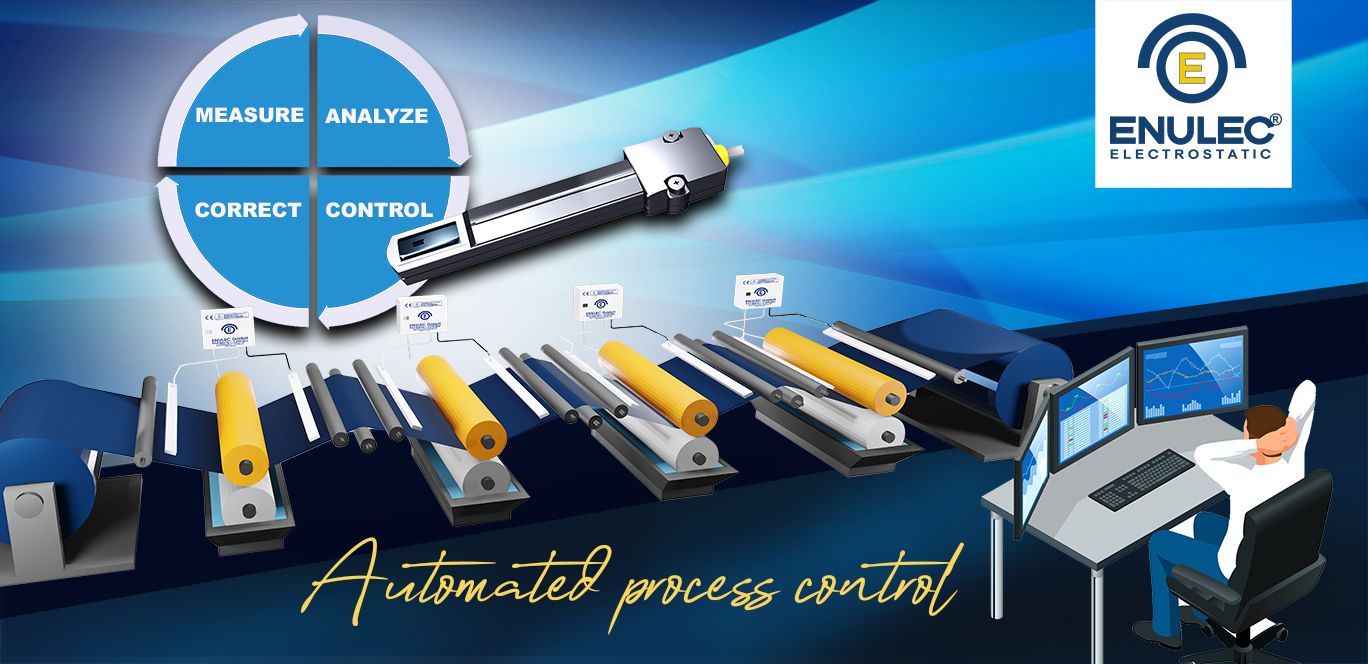Electrostatic effects are among the invisible yet decisive influencing factors in industrial manufacturing processes. Especially in the transfer of ink or lacquer from the gravure cells of a cylinder or anilox roller onto the substrate, electrical charges have a direct impact. They directly affect the quality and stability of printing, coating, and finishing processes. Attraction, repulsion, and balance determine whether a process runs efficiently, reproducibly, and without disruption – or whether quality defects, production downtime, and safety risks arise.
Under the term “Balanced Charging,” Enulec defines a technological approach that not only controls these effects but actively shapes them. The goal is the deliberate balancing of electric fields, leading to higher print quality, greater process stability, and improved cost-efficiency.
“Balanced Charging” – More Than Just Technology
Behind the term “Balanced Charging” lies a patented Enulec high-end technology developed for the most demanding requirements of the printing, coating, and converting industries. It combines the highest standards of quality and safety with economic efficiency and productivity – a symbiosis that redefines production processes.
Wherever flexible materials are processed at high speed, electrostatic effects occur. Even at voltages as low as 10 to 15 kV, disruptions can arise – in practice, the levels are often many times higher. If left untreated, charges can reach up to 300,000 volts, causing severe consequences: fires or explosions when solvent-based substances are used, harmful electric shocks due to sudden discharges, attraction of dust and dirt, or adhesion of films to each other and to carrier materials. Production stops, reduced machine speeds, and quality losses are the inevitable results. At this point, quality, safety, and efficiency fall out of balance.
The Solution: Targeted Electrostatic Support
This is where Enulec’s technology concept comes in. Electrostatic charge is not suppressed but deliberately controlled. The electric field is brought into balance – neutralized or productively utilized without unwanted side effects.
With the introduction of the Enulec ESA Staticloop 360° in 2022, a milestone was achieved. The global gravure association (GRA) honored this innovation with the Silver Award for “Process Innovation.” The foundation of this development is an iterative process of static charge monitoring: ESA and discharge systems continuously communicate with the production machine across multiple variables. Individual parameters and configurations are dynamically integrated into the calculations.
The result is an automated workflow that takes quality, safety, and efficiency equally into account. Setup times are reduced, new materials can be processed quickly and resource-efficiently, and the lack of skilled labor is compensated for by intelligent process control. Particularly in explosion-hazard environments, the technology makes a decisive contribution to employee safety.
Triple Master – The Next Level of Electrostatic Intelligence
Building on this philosophy, the new Enulec Triple Master – Static Control System monitors and eliminates electrostatic charges in the winding and processing areas of film production.
Correction takes place through automated analysis of the collected measurement data. The system intervenes proactively in the typically oscillating charge state of the film and reduces tension both on the surface of the substrate web and within intermediate layers.
Control is provided by the company’s proprietary Roto-Green Control Software, which records, analyzes, and manages all production data. However, Roto-Green is more than a control system: it acts as a gateway, connecting various internal and external network areas of modern printing machines and production lines – making Enulec technology an integral part of the entire production chain.
Conclusion: Balance as a Core Philosophy
“Balanced Charging” is not merely a technical feature, but the guiding principle behind Enulec’s research and development. The “controlled dialogue” between machine, material, and ink enables precise, stable, and economically optimized production processes.
The power of electric fields is no longer a random factor but a controlled one – transforming what was once unpredictable into a clear advantage: superior print quality, stable processes, and increased profitability.
